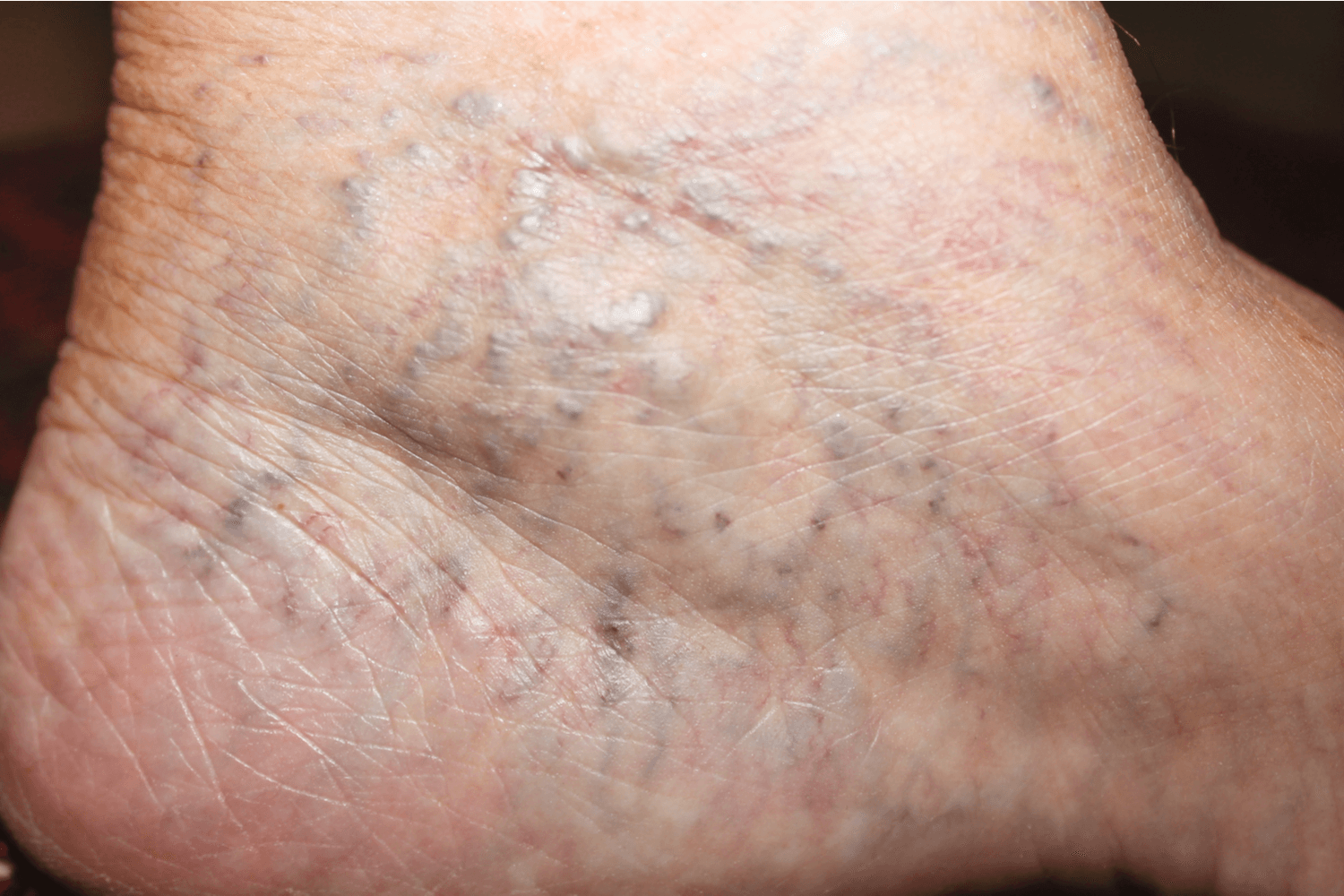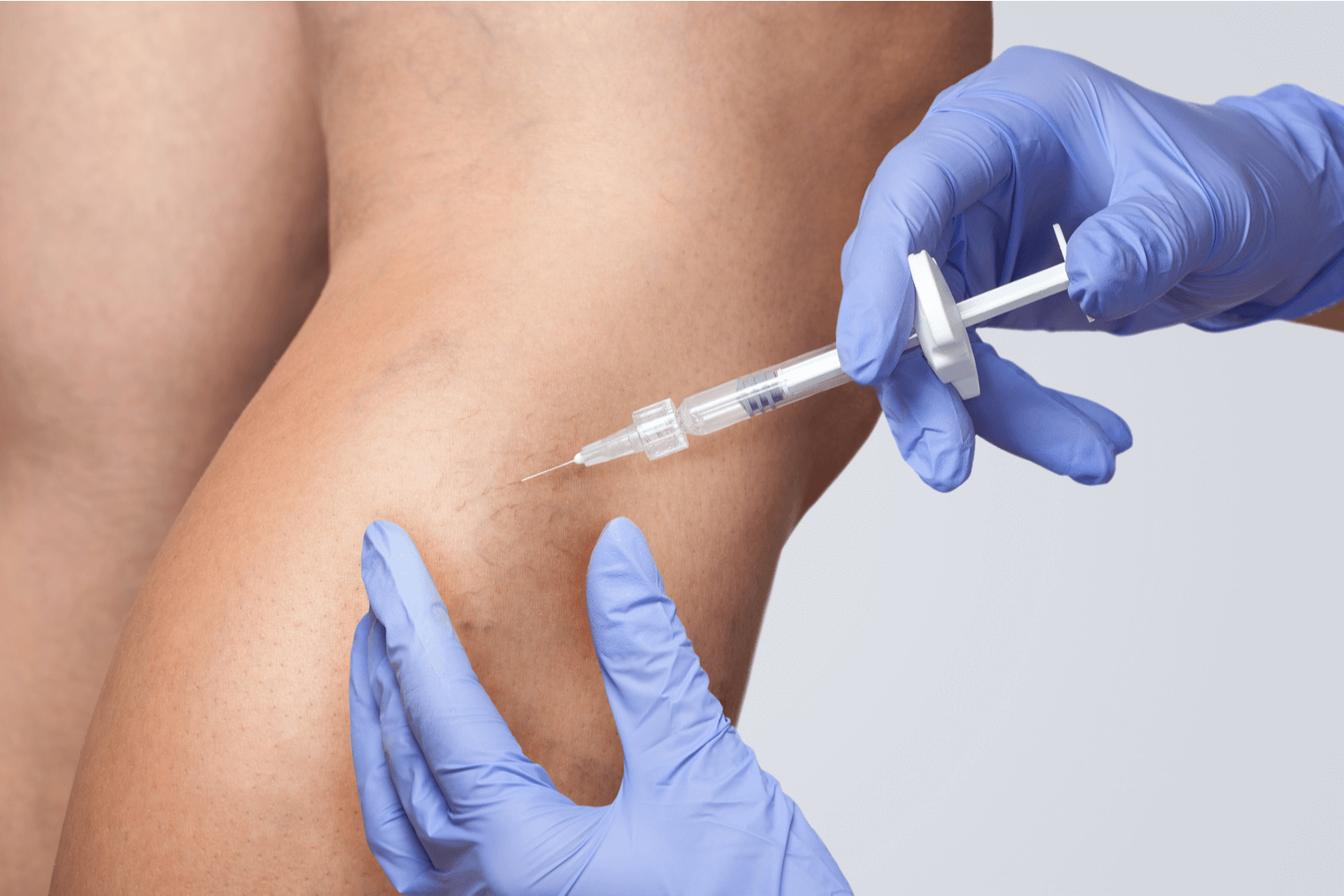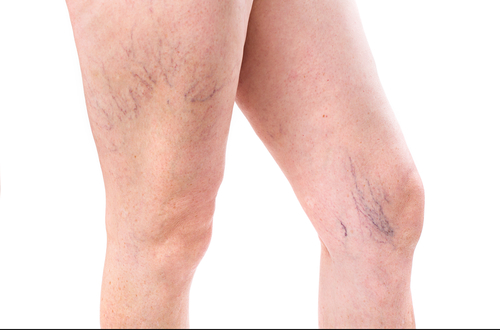
What Are Spider Veins?
Spider veins are small, damaged veins that can appear close to the surface of the skin. They are typically red, purple, or blue and can be found on various parts of the body. These veins most commonly appear on the legs, thighs, or facial area.
What Causes Spider Veins?
Spider veins generally occur when small tiny invisible veins that run through and just beneath the skin dilate. As these tiny veins enlarge they become visible because – you literally see the blood flow through the vein. This results in a web-like pattern of spider veins that become noticeable on our thighs and lower legs.
In some instances, an underlying vein problem – caused by abnormal pooling in veins with valve malfunctions. Since these valves are responsible for keeping blood moving in the right direction, damage to the valve results in blood simply stagnating in place resulting in increased vein pressure that can exacerbate spider veins.
Facial spider veins are most often caused by sun damage that causes the wall of the blood vessels to weaken and dilate.
Spider veins may also be caused by local physical trauma, bruise or contusion. Additionally, spider veins may develop without any obvious cause.
Risk Factors for Developing Spider Veins
Age
Over time, the valves in your veins may become less responsive, leading to varicose veins and spider veins. Aging also means you will have experienced more sun damage that could have damaged your veins and caused spider veins to form.
Gender
Women are more prone than men to see spider veins. Although, men are not immune from spider veins. Pregnancy places more stress on the veins, therefore making spider veins more likely to develop.
Jobs that require a lot of standing
As you might have noticed, adding stress to the veins is one of the most common causes for developing spider veins. So, if you’re working a job that requires you to be on your feet for long periods of time, you’re more likely to develop spider veins in your legs.
Hormonal changes
As mentioned above, pregnancy is a risk factor for developing spider veins. In particular, the hormonal changes that come with pregnancy, and then after pregnancy, add stress on the veins and make them more vulnerable to venous insufficiency.
Family history of spider veins or varicose veins
If people in your family have had spider veins or varicose veins, it’s more likely that you will develop the same or similar vein problems.
History of sunburns, tanning, or the use of tanning beds
As mentioned earlier, sun damage is one of the reasons spider veins can develop. When the tiny capillaries near the surface of your skin on your face or legs are exposed to UV radiation from the sun or tanning beds, they can become damaged. And over time, these capillaries may become spider veins.
Keep in mind that these are only the known risk factors. Both men and women of any age may develop spider veins. Finally, it is also possible to develop spider veins as a side effect of receiving vein surgery.

Spider Vein Treatment Options
If you’re experiencing discomfort or cosmetic concerns from spider veins, the following treatments are effective ways to take care of spider veins.
Compression Stockings
Compression stockings and socks may be helpful in addressing spider veins in some cases. The extra compression provides more support for your veins and encourages healthy blood circulation by decreasing vein pressure in your legs – this may slow down the formation of spider veins.
Sclerotherapy
Venous injection therapy effectively closes off the diseased veins or capillaries. The closed veins are then reabsorbed into the body and disappear. Multiple appointments for sclerotherapy may be required to see complete results.
During this procedure, your doctor will inject a solution into the spider veins. This damages the vein wall causing the veins to seal up over time. Blood can no longer flow through the sealed vein, and over time the veins will fade away improving the appearance of the treated area. Since our body has numerous veins, blood will simply redirect to a healthier vein that is not visible to the unaided eye. Sclerotherapy is a simple and straightforward treatment, typically taking less than 30 minutes to complete in-office. You walk in and walk out, and there is no downtime after the treatment. Multiple appointments for sclerotherapy may be required to see complete results.
Frequently Asked Spider Vein Questions
How are Spider Veins Different from Varicose Veins?
Both spider veins and varicose veins are visible, dilated blood vessels close to the skin’s surface. They are both types of venous disease caused by a weakening blood vessel wall. However, spider veins and varicose veins both look different and have different symptoms.
Spider veins are small, thin dark veins that can be blue, red, purple, or even black. Their shape resembles tree branches. Most of the time, spider veins are not painful. People can develop spider veins on their thighs, legs, ankles, and face.
Varicose veins bulge, twist and appear larger than spider veins. They are often dark blue and develop on legs and feet. Unlike spider veins, varicose veins can burn, itch, and feel warm near the veins. Sometimes people experience leg or foot pain and tenderness.
Severe, untreated varicose veins can lead to other medical conditions such as blood clots and poor circulation.
Are Spider Veins Dangerous?
Fortunately, spider veins are not a threat to your physical health. They are often considered a cosmetic nuisance, so many people choose to treat spider veins for cosmetic concerns.
How to Prevent Spider Veins in Thighs?
Compression stockings may be helpful in slowing down the progression of spider vein formation. The extra compression provides more support for your veins and encourages healthy blood circulation. This support decreases vein pressure in your legs, possibly preventing the dilation of veins that cause spider veins. You can also reduce risk factors by adjusting your lifestyle to improve blood flow.
Do Spider Veins Go Away?
Spider veins will not go away on their own. The best way to permanently eliminate spider or varicose veins is to seek treatment from a vein specialist. Sclerotherapy is an excellent option for spider vein treatment.
Can You Tattoo Over Spider Veins?
Tattooing over spider or varicose veins is not a good idea. It may (but not always) make future vein treatments more challenging to perform.
If you are looking to hide spider veins, the best option is to use make-up or sunless self-tanning lotions. Or, simply schedule an appointment with VeinSolutions™ for an evaluation on better ways to improve the appearance of your legs.
How to Get Rid of Spider Veins On Your Legs
If preventative measures like compression leggings don’t reduce your small purple veins, schedule a treatment with vein specialists at Vein Solutions.
Our specialists will provide a thorough examination and screening process to determine which procedure will be best for you. At Vein Solutions in Flint and Lapeer, MI, we use sclerotherapy and minimally invasive vein procedures to make your spider veins disappear.

VeinSolutions™ a division of Michigan Vascular Center
Looking for a vein expert in the Michigan region? Then look no further! Here at VeinSolutions™, we have an excellent team of board-certified Vascular Surgeons that can diagnose and treat numerous vein conditions. We offer Sclerotherapy, Venous Ablation, Microphlebectomy, as well as other great treatments that can address those pesky vein problems.
Not sure if your vein condition is simply spider veins or if there is a different condition affecting your veins? No worries, here at VeinSolutions™, we offer FREE vein screenings. In addition to this, our office is equipped to provide venous ultrasounds, which can give more insight into your condition and help us form a diagnosis.
Best of all, we care about our clients. That’s why we strive to make each one of your office visits as comfortable and easy as possible. Simply call or go online to schedule your appointment with us. We look forward to seeing you!
